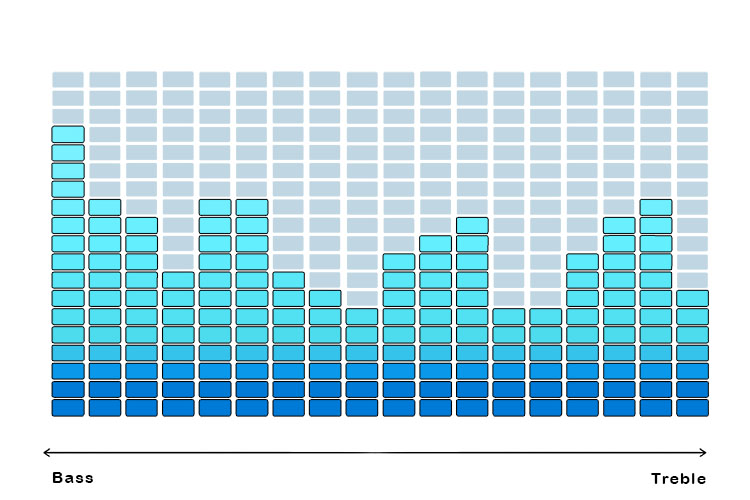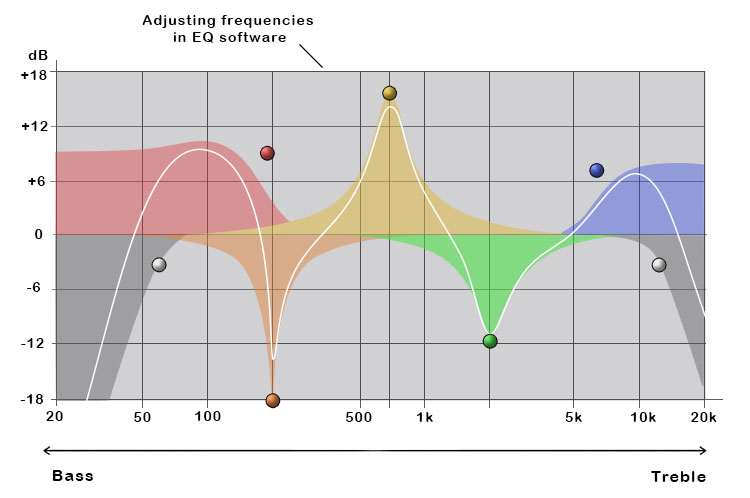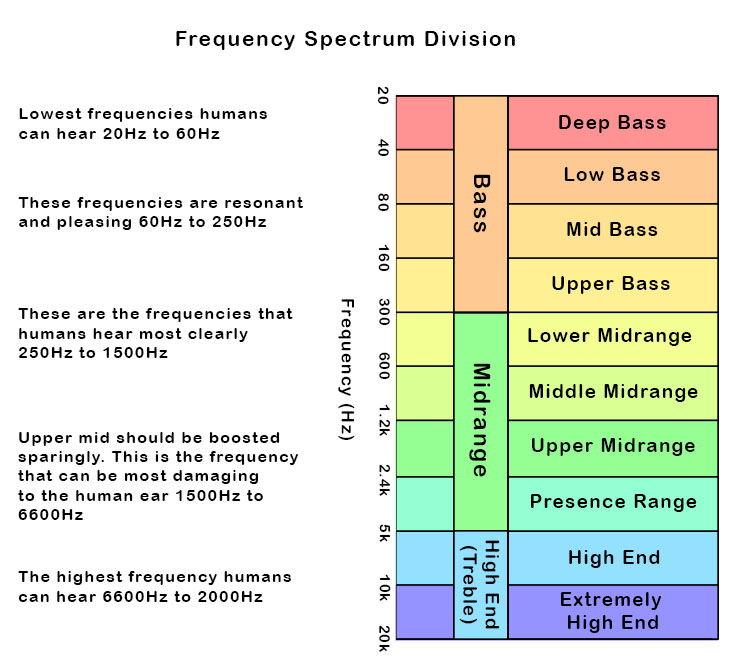EQ – Short for equalisation, it's the lessening or boosting of different frequencies to add more bass or treble to a musical track
(Pronounced ee-kyoo)
To remember what EQ means use the following mnemonic:
Each queue (EQ) of people represents a different frequency. Lessening or boosting their size affects bass or treble.

Below is what an equalisation display looks like.

The adjustment of a musical track's EQ is normally done in the mixing and mastering stage of a song's production. This is carried out on a piece of music production software, allowing for easy adjustments of frequencies.

Different genres of music require different styles of EQ. For example, hip-hop requires an increase in the bass frequencies to create powerful drum tracks, while orchestra music will feature raised midrange and treble frequencies to bring forward the sound of string instruments such as violins.

20Hz to 60Hz
The lowest audible sounds in human hearing are present in club music through low-pitched drums, bass and sub-bass. Amplifying these frequencies can create a strong shaking effect, but overdoing this can make a mix sound muddy and unclear.
60Hz to 250Hz
The boosting of these upper bass/ lower mid frequencies is often used by producers to make the drums cut through more in the mix.
250Hz to 1500Hz
Boosting the mids can create a similar effect as raising the overall volume. To make an instrument more prominent in a mix, increasing the mid-range is effective. However, over-boosting can be fatiguing for the ear and overwhelming for the listener.
1500Hz to 6600Hz
Boosting upper mids should be done with care as it can cause damage to hearing. But when mixed correctly, these frequencies can produce bell-like sounds and resemble distortion, which can be useful for creating intense, fuzzy tones.
6600Hz to 20000Hz
Producers will often boost super-high frequencies to create atmosphere, but reduce the lower treble to lessen the piercing sounds those frequencies can produce.




